ADVANCED POWER SYSTEMS
What is Advanced Power Systems?
Conventional power systems
Even today, as renewable sources are extensively present, most of the electrical energy is still produced by conventional sources. That is in hydroelectric power stations, thermal power plants, and nuclear power plants.
A necessary equilibrium
Green energy
In the desire to minimize environmental impact, alternative sources of electrical energy are increasingly being built and used. The future belongs to natural energy sources. Wind, sun, geothermal energy, and energy of the sea are in the foreground of green solutions. Increasing demand for sustainability will accelerate their presence over time, it is therefore imperative to further develop green energy systems using modern technology and advanced methods.
ICT and future technologies
We can no longer imagine modern electrical power systems without extensive cooperation with information and communication technologies. During the course of your studies, you will be deeply involved in studying communication systems, data collection platforms, software and cyber security. From a production as well as an end-user perspective.
Face modern challenges
More power
We will need to find a path towards increasing the technical and economic performance of the entire electrical power system, including human end users. All this will not be possible without a new generation of engineers with the necessary knowledge in the field of Advanced Power Systems.
Study programme Advanced power systems
The Curriculum
Winter semester
October - February
Higher education teachers:
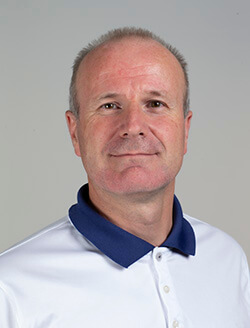 |
| Marko Čepin |
Credits: 6
Semester: Winter
Subject code: 64216
Duration: one semester (15 weeks)
Time commitment (lectures/tutorial and lab work/individual work): 45/30/75
Content (Syllabus outline)
- Hydroelectric power plants
Basics of hydrodynamics, water flow in pipes and channels, basics of turbomachines, design and operating characteristics of turbines, turbine control, dams and barriers, hydraulic hydroelectric schemes, types of hydroelectric power plants regarding accumulation, water heights and flow, and mode of operation. - Thermal power stations
Basics of thermodynamics, combustion processes, and steam boilers, process efficiency, characteristics of steam and gas turbines, problems of emissions and impact on the environment, systems to reduce emissions of thermal power plants. - Nuclear power plants
Fundamentals of nuclear reactions, relation between mass and energy, characteristics of the most common types of nuclear reactors, operation of reactors, nuclear power plant systems, natural radiation and radiation protection, radioactive waste, their effects to the environment and disposal, nuclear power plants safety, risk assessment methods.
Objectives and competences
The student will learn basic mechanisms of primary energy conversion to electric energy with classic technologies. They will be able to assess energy potentials regarding their conversion technologies into electric energy and will discover the structure and functions of components and their interactions within conventional power plants. The subject will help identify potential problems and solutions regarding spatial planning associated with electric power systems.
Learning and teaching methods
- lectures
- laboratory work
Study materials
1. B. Orel: Energetski pretvorniki I, Založba FER, Ljubljana 1992.
2. Orel: Energetski pretvorniki II, Založba FER, Ljubljana 1993.
3. R. K. Rajput, Power Plant Engineering, Laxmi Publications, Fourth edition, 2008.
4. G. Kessler, Sustainable and Safe Nuclear Fission Energy, Springer 2012.
Higher education teachers:
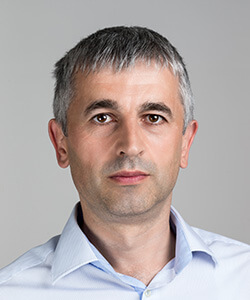 |
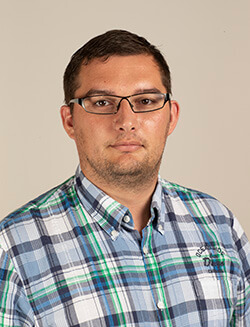 |
| Andrej Košir | Matevž Kunaver |
Credits: 6
Semester: Winter
Subject code: 64215
Duration: one semester (15 weeks)
Time commitment (lectures/tutorial and lab work/individual work): 45/30/75
Content (Syllabus outline)
- Definition, characteristics and limitations of the built-linear circuits, the characteristics of ideal elements.
- Basic electrical signals: the harmonic signal, unit step, unit impulse and operations on signals.
- Topological circuit description, the incidence array, the array of graph windows, loop and nodal method of setting circuit equations.
- Theory of the source transformation, and Tellegen duality theorem.
- Classical Analysis: System differential equation and its solution, initial conditions and interpretation solutions.
- Convolution.
- AC analysis: indicators, system function, imitance and transfer function, complex power and Tellegen theorem.
- Single input circuits, Thevenin and Norton equivalent circuit, theorem of maximum power transmission, resonance.
- Two port circuits: the reciprocity theorem, the parameters of port circuits, the equivalent circuit and integration. The input impedance, impedance mapping and impedance adaptation, conductivity and transfer function.
- Spectral analysis: Signal spectrum, using Fourier trigonometric and exponential type and integral in the analysis of linear circuits.
- Laplace transform: Laplace transform, circuit model in the complex frequency domain, the initial state of the circuit, system function, circuit analysis with
- Laplace transform. Calculating the inverse transformation.
Objectives and competences
Basic knowledge of electrical circuits and signals. Basic knowledge of linear systems analysis and on selected phenomena in electrical systems.
Learning and teaching methods
- lectures
- tutorials
- project assignment
Study materials
1. B. P. Lahti: Linear Systems and Signals, Oxford university press, 2005.
2. P. D. Cha, J. I. Molinder: Fundamentals of Signals and Systems, Cambridge university press, 2006.
3. J. Mlakar: Linearna vezja in signali, Založba FE in FRI, 2002.
4. A. Košir: Linearna vezja in signali, zbirka rešenih vaj, Založba FE in FRI, 2005.
Higher education teachers:
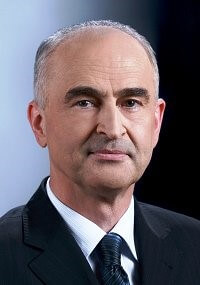 |
 |
| Janez Bešter | Andrej Kos |
Credits: 6
Semester: Winter
Subject code: 64237
Duration: one semester (15 weeks)
Time commitment (lectures/tutorial and lab work/individual work): 45/30/75
Content (Syllabus outline)
- Basic network concepts (connections, hierarchies, network elements, terminals, connection orientation). Network architectures (access, aggregation, core, service subsystems). Broadband networks and services. Broadband networks and technologies (xDSL, FTTx, DOCSIS, wireless, mobile). Packet switch architecutres.
- Ethernet network (VLAN, STP, MSTP, EtherChanel) and operator services (MetroEthernet, 802.1ad, 802.1ah).
- TCP/IP protocol stack (addressing, DHCP, NAT, ARP, applications, tools).
- Fundamentals of routing. Advanced routing algorithms and mechanisms. Network protocol IPv6. Multicast. Network security. Professional networks.
Objectives and competences
This course provides an overview of concepts, architectures and protocols in modern telecommunication networks. The focus being network transfer with IP protocol.
Learning and teaching methods
- lectures
- laboratory work
Study materials
1. Comer, D.: Internetworking with TCP/IP, Vol 1 (6th Edition), ISBN-10: 013608530X, 2013, Addison-Wesley.
2. Tannenbaum, A.S.: Computer networks, 5th ed., international ed., ISBN 978-0-13-255317-9, 2011, Pearson.
3. Stallings, W.: Data and computer communications, 9th ed., ISBN 978-0-13-139205-2, 2011, Prentice Hall.
4. Fall, K. R., Stevens, W. R.: TCP/IP illustrated. Vol. 1, The protocols, 2nd ed., ISBN 978-0-321-33631-6, 2012, Addison-Wesley.
5. Medhi, D., Ramasamy, K.: Network Routing: Algorithms, Protocols, and Architectures, ISBN 0-12-088588-3, 2007, Elsevier: M. Kaufmann Publishers.
Higher education teachers:
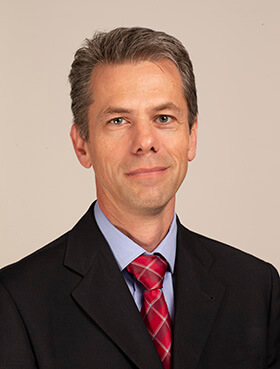 |
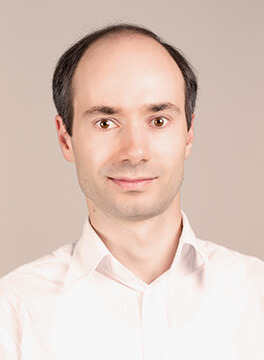 |
| Marko Topič | Boštjan Glažar |
Credits: 6
Semester: Winter
Subject code: 64224
Duration: one semester (15 weeks)
Time commitment (lectures/tutorial and lab work/individual work): 45/30/75
Content (Syllabus outline)
- Circuits for reshaping the signal forms
- Resistive circuits
- Ohmic rectifiers
- Voltage limiters
- Voltage regulators
- Current regulators
- Comparators
- Non-linear amplifiers
- Power amplifiers
- Dynamic circuits
- RC rectifiers
- Voltage multipliers
- Signal detectors
- Clampers
- Circuits for generating signals
- Monostable, bistable and astable multivibrators
- Switching regulators
- DC/DC regulators
- AC/DC (power supplies)
- DC/AC (inverters)
- Phase-locked loops
- Basic principles and components
- Applications
- A/D and D/A conversion circuits
- Sample/Hold circuits
- Anti-aliasing filters
- A/D circuits
- D/A circuits
Objectives and competences
The subject extends the knowledge of analog electronic circuits and provides foundations of non-linear electronic circuits. The subject covers principles of signal reshaping or generation by non-linear circuits and provides practical examples of real world devices. The content is selected as a broad range of non-linear circuit types and is a foundation for advanced concepts in analog electronics.
Learning and teaching methods
- lectures
- laboratory work
- project assignment
Study materials
1. James W Nilsson and Susan Riedel: Electric Circuits (8th Edition), 2007.
2. Roland E. Thomas: The Analysis and Design of Linear Circuits, 2006.
3. Donald O. Pederson and Kartikeya Mayaram: Analog Integrated Circuits for 4. Communication: Principles, Simulation and Design, 2007.
5. M. Topič, A. Levstek in M. Jankovec: Zbirka rešenih nalog iz nelinearnih elektronskih vezij, 2006.
6. M. Topič: Nelinearna elektronska vezja (učbenik v pripravi).
elective winter courses
Students must choose one(1) course
Higher education teachers:
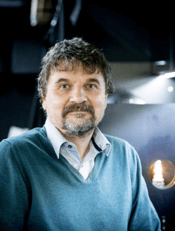 |
 |
| Grega Bizjak | Matej Bernard Kobav |
Credits: 6
Semester: Winter
Subject code: 64254
Duration: one semester (15 weeks)
Time commitment (lectures/tutorial and lab work/individual work): 30/45/75
Assessment: report of laboratory tutorial (33 %), exam project (33 %), project presentation and oral exam (34 %)
Content (Syllabus outline)
The course concentrates on humans and their needs for light. With the help of selected chapters, it shows the effects of light on humans and how we can use these effects in connection with lighting and modern light sources to improve our lives. Today lighting should not only enable our vision but should also stimulate our entire organism. Besides that lighting should be energy-efficient and have minimal negative impacts on our environment.
Content is divided into the following sections: Visual effects of light, Non-visual effects of light, Basic physics of light, Light and colour, Photometry, Light sources, Luminaires, Lighting with artificial light, Daylight, Lighting design, Quality of road lighting, Planning of Road Lighting.
Objectives and competences
The course aims to acquaint students with the state of the art in lighting. Students will learn how important lighting is for humans and how lighting can be used to improve working and living conditions but also what problems are connected with artificial lighting. We will introduce the methods for lighting planning and show how to use appropriate tools in the process.
Lighting engineering course will give students up to date information about lighting technique including modern light sources and control systems. Using the gained knowledge, students will be able to design lighting for different indoor and outdoor environments and will also learn how to make all necessary calculations needed for the evaluation of lighting plan according to international standards and recommendations. With help of practical work – lighting planning students will master planning tools and become ready to start their light design career.
Learning and teaching methods
- lectures
- laboratory work
- project assignment
Study materials:
1. Van Bommel, Wout: Interior Lighting, Springer Nature Switzerland AG, 2019.
2. Van Bommel, Wout: Road Lighting, Springer Nature Switzerland AG, 2015.
3. Boyce, Peter R.: Human Factors in Lighting, CRC Press, 2014.
4. Lenk, Ron, Lenk, Carol: Practical Lighting Design with LED, IEEE Press, 2011.
5. Valberg, Arne: Light Vision Color, John Wiley & Sons, Ltd, 2005.
6. Ander, Gregg D.: Daylighting Performance and Design, John Wiley & Sons, Ltd, 2003.
7. The IESNA Lighting handbook: reference and application, New York: Illuminating Engineering Society of North America, cop. 2011 or 2000.


Higher education teachers:
 |
| Matej Zajc |
Credits: 6
Semester: Winter
Subject code: 64311
Duration: one semester (15 weeks)
Time commitment (lectures/tutorial and lab work/individual work): 45/30/75
Content (Syllabus outline)
Analog components of electronic communications circuits and manufacturing technologies. Digital components of electronic communications systems: application specific processors, programmable architectures, peripheral units and manufacturing technologies. Components of high-frequency communication systems: signal acquisition and processing. Consumer electronics and embedded systems: optimized power consumption, product life cycle, sub-system optimization, level of integration and impact on features and costs. Communication systems: architecture of communications systems, hardware and software, digital signal processors’ architecture and applications, communication processors, network processors and packet processors. Multimedia systems: multimedia systems’ architecture, hardware and software, algorithm design and implementation.
Objectives and competences
- The main objective of the course is to deepen the understanding of circuits for signal acquisition, processing and transmission
- Understanding of analog and digital electronic circuits and their application in communication and multimedia systems
- Modern communication electronics state of the art, technological and economic feasibility, and technology trends
Learning and teaching methods
- lectures
- laboratory work
- project assignment
Study materials
1. K. K. Parhi: VLSI Digital Signal Processing Systems: Design and Implementation, Wiley.
2. P. R. Gray, R. G. Meyer: Analysis and Design of Analog integrated Circuits, Wiley, 1993.
3. J. F. Wakerly: Digital Design, Prentice Hall, 2001.
4. Lee E. A.: Meseerschmitt D.G., Digital Communications, Kluwer Accademic Press, 1998.
Higher education teachers:
 |
| Urban Sedlar |
Credits: 6
Semester: Winter
Subject code: 64239S
Duration: one semester (15 weeks)
Time commitment (lectures/tutorial and lab work/individual work): 45/30/75
Assessment: written exam (50 %), oral exam (50 %)
Content (Syllabus outline)
The course focuses on modern computing and software development. Students will get acquainted with basics of computer architectures and limitations that importantly influence software design. Operating systems will be given special attention, since they represent the environment for most of the software we develop and use. This will be extended with basic concepts of virtualization, which represents a key mechanism in modern cloud environments, and basics of distributed systems, giving an overview of the trade-offs that await designers of modern large-scale multi-computer systems.
Content is divided into the following sections: Operating systems, Processes, threads and scheduling, Input-output devices and drivers, Data storage and file systems, Inter-process communication and synchronization, Memory and memory management, Databases and transactions, Distributed systems, Virtualization and cloud computing, Software development approaches.
Objectives and competences
After successful completion of the course, students will be able to: describe the basic principles and workings of an operating system; explain atomicity and its applications in the context of software and database systems; develop a multi-threaded program with mutually exclusive access to a shared resource; use multiple mechanisms for inter-process communication in practice; evaluate the decisions in the design of a distributed computing system; and explain different server virtualization techniques.
Learning and teaching methods
- lectures
- laboratory work
- project assignment
Study materials
1. Andrew S. Tanenbaum: Modern Operating Systems, Prentice Hall, 4th ed., 2014.
2. Thomas Anderson, Michael Dahlin: Operating Systems – Principles and Practice, Recursive Books, 2014.
3. Andrew S. Tanenbaum, Maarten van Steen: Distributed Systems – Principles and Paradigms, CreateSpace Independent Publishing Platform, 2016.
4. Andrew Hunt, David Thomas: The Pragmatic Programmer: From Journeyman to Master, Addison-Wesley Professional.
5. Remzi Arpaci-Dusseau, Andrea Arpaci-Dusseau: Operating Systems – Three Easy Pieces, Arpaci-Dusseau Books, 2015.
Summer semester
February - June
Higher education teachers:
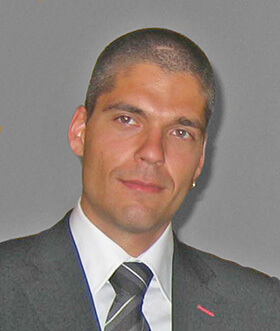 |
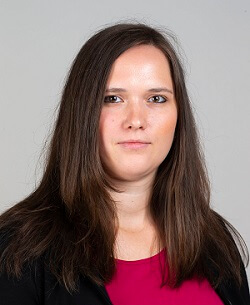 |
| Miloš Pantoš | Jerneja Bogovič |
Credits: 6
Semester: Summer
Subject code: 64284
Duration: one semester (15 weeks)
Time commitment (lectures/tutorial and lab work/individual work): 45/30/75
Assessment: report of laboratory tutorial (33 %), exam project (33 %), project presentation and oral exam (34 %)
Content (Syllabus outline)
This course comprises two parts: i) power system protection, and ii) power system control. In the first part, general principles regarding power system protection are presented followed by a presentation of protection methods and schemes for main power system elements such as generators, transformers, transmission lines, etc. A special concern is given to numerical (digital) protection including wide-area protection systems.
The second part addresses power system control schemes including a presentation of main elements and functionalities of SCADA (Supervisory Control And Data Acquisition) systems followed by lectures regarding databases, communication theory, signal processing, frequency and voltage control with another ancillary services, and other control functions, standards and equipment.
Objectives and competences
After successful completion of the course, students should be able to develop mathematical models for all types of short circuits occurring during power system operation, describe physical phenomena in devices during short circuit occurrence, interpret basic principles of protection of individual devices or set of devices and control systems, conceptualize and realize protective and control systems and automation of power systems, explain and upgrade automation and control function in practice.
Learning and teaching methods
- lectures
- laboratory work
- project assignment
Study materials
1. Horowitz S. H., Phadke A.G.: Power system relaying, J. Wiley & Sons, New York, 1992.
2. Kundur P.: Power System Stability and Control, McGraw-Hill, 1993.
3. Anderson P. M., Fuad A. A.: Power System Control and Stability, IEEE Press, New York, 1994.
4. Ziegler G.: Numerical Differential Protection: Principles and Applications, 2nd Edition, Publicis 2012.
Higher education teachers:
 |
 |
| Janez Bešter | Urban Sedlar |
Credits: 6
Semester: Summer
Subject code: 64271S
Duration: one semester (15 weeks)
Time commitment (lectures/tutorial and lab work/individual work): 45/30/75
Assessment: written exam (50 %), oral exam (50 %)
Content (Syllabus outline)
The course will give students a systematic overview of mobile technologies and their role in the Internet-of-Things (IoT) scenarios, with emphasis on understanding their characteristics, operation principles and development activities.
Content is divided into the following sections: Characteristics of mobile systems (available radio spectrum, cellular coverage, radio channel capacity, mobility management). Commercial mobile networks 2G, 3G and 4G (network architectures, multiple access, core evolution, connection establishment, security). Internet-of-Things connectivity issues (evolution of mobile technologies towards IoT, IoT communication requirements, LTE-M, SigFox, LoRa examples). Critical communications infrastructure (special networks of national importance with high availability). Wireless local area networks Wi-Fi (overview of 802.11b/g/n/ac/ad, planning and management, QoS and security). Short-range wireless sensor networks (Bluetooth, ZigBee, RFID, NFC, proprietary). Internet of things applications and services (smart cities, intelligent buildings, location services, road telematics, health services, smart grids).
Objectives and competences
After successful completion of the course, students will be able to understand mobile, local-area and personal wireless networks performances, and their applications in the Internet of things.
Learning and teaching methods
- lectures
- laboratory work
- project assignment
Study materials
1. Sauter, M.: From GSM to LTE-Advanced: An Introduction to Mobile Networks and Mobile Broadband, John Wiley & Sons, Chichester, 2014.
2. Chilamkurti, N.: Next-Generation Wireless Technologies: 4G and Beyond, Springer-Verlag London, 2013.
3. Gratton, D. A.: The Handbook of Personal Area Networking Technologies and Protocols, Cambridge University Press, New York, 2013.
4. Balani, N.: Enterprise IoT: A Definitive Handbook, CreateSpace Independent Publishing Platform, 2015.
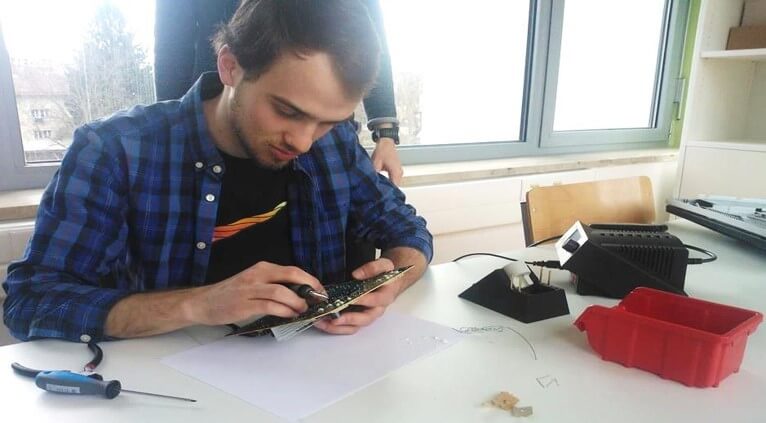
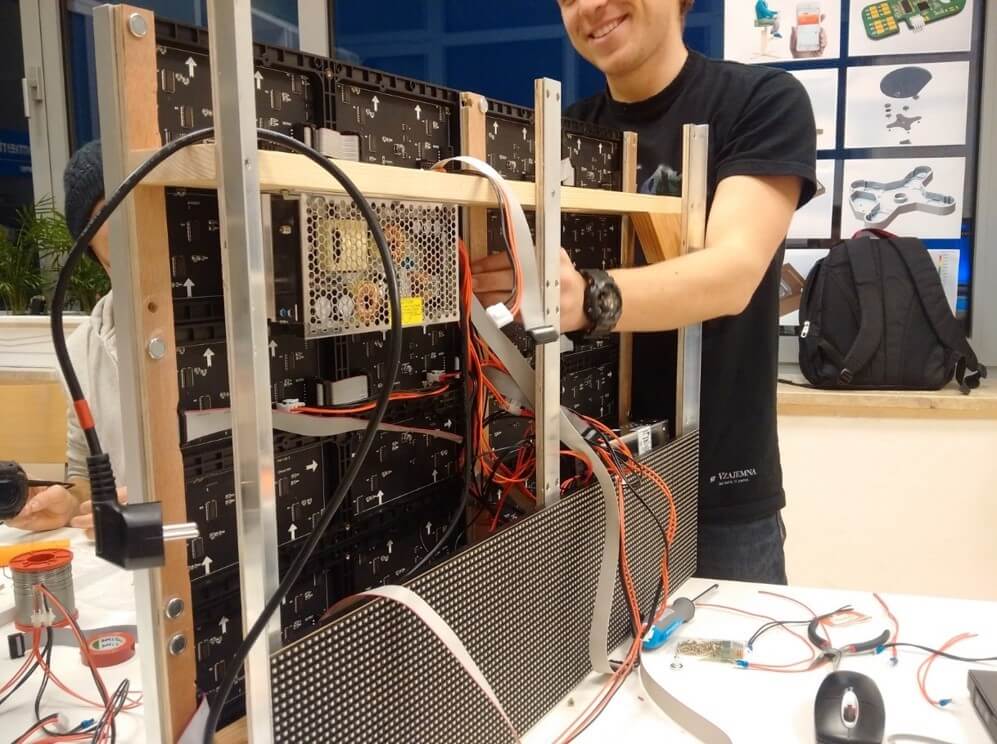
Higher education teachers:
 |
 |
| Peter Zajec | Danjel Vončina |
Credits: 6
Semester: Summer
Subject code: 64268
Duration: one semester (15 weeks)
Time commitment (lectures/tutorial and lab work/individual work): 30/45/75
Assessment: report of laboratory tutorial (40 %), exam project (40 %), project presentation and oral exam (20 %)
Content (Syllabus outline)
The objective of the course is to emphasise the role of modern switched-mode operated converters taking place in diverse power delivery chains - ranging from grid-tied converters down to the point-of-load dc/dc converters. As their operation should be efficient, as well as safe and robust, the course addresses several aspects. In detail, the content is as follows:
- Topologies of switched-mode converters and overview of basic terminology.
- Quasi-stationary operation of DC/DC converters open-loop and closed-loop methods for controlling the converter (PWM, phase-shift PWM, DTM, hysteresis controller).
- DC/AC converters for electric motor drives and for uninterruptible power supply systems (UPS) and photovoltaic systems (performance analysis, harmonic spectrum).
- Mitigating the negative effects of converters on the supply and load side (active and passive filtering measures, output quality factors).
- Addressing the basic concepts of electromagnetic compatibility and measures to reduce EM emissions.
Objectives and competences
After successful completion of the course, students will be able to analyse the operation of the converter on the basis of the measured currents and voltages, describe the role of the explicit components and calculate their current, voltage and power stress. Students will be also capable to derive mathematical models for the DC/DC and DC/AC converter and evaluate their steady-state and dynamic performance. They will get familiar with the undesirable impacts of the parasitic inductances and capacitances – both on a scale of a printed circuit board and up to the system level, on the converter’s performance. Students will also know to identify and argue the countermeasures for reduction of the converters’ unwanted impacts on the supply and load side of the converter, and to the adjacent devices in a form of the electromagnetic interference.
Learning and teaching methods
- lectures
- laboratory work
Study materials
1. B. K. Bose: Power Electronics and Motor Drives: Advances and Trends. Academic Press, 2010.
2. J. Jacob: Power Electronics: Principles and Applications. Cengage Learning, 2001.
3. T. L. Skvarenina: The Power Electronics Handbook. CRC Press, 2001.
4. T. Williams: EMC for Product Designers. Elsevier Science, 2011.

elective summer modules
Students must choose one(1) module
Module A
 |
| Igor Škrjanc |
- Introduction to intelligent systems. Intelligent systems in data-mining, classification and fault detection.
- Basic methods of local nonlinear optimization used in intelligent systems and global nonlinear optimization methods for model identification.
- Methods of global nonlinear optimization: simulated annealing, evolutionary algorithms, particle swarm optimization, genetic algorithms, branch, and bound algorithms.
- Unsupervised learning methods. Principle component analysis. PCA in identification, data filtering, control, and fault detection.
- Data clustering. Methods of clustering: fuzzy c-means, Gustafon-Kessel fuzzy c-means, possibilistic c-means clustering, method of regression clustering.
- Optimization of complex models. Verification and validation of models. Explicit and implicit optimization of the model structure.
- Static models. Model-based on basis function formulation. Polynomial models.
- Neural networks. Multilayer perceptron network. Radial basis function networks in function approximation.
- Fuzzy and neuro-fuzzy models. Fuzzy logic. Types of fuzzy models. Estimation of the fuzzy model parameter. Global and local estimation. Different structures of fuzzy controllers.
- Nonlinear dynamical systems. Classical polynomial models in nonlinear modeling. Identification of dynamical fuzzy and neuro-fuzzy models.
- Interval fuzzy model and families of functions.
- Supervised hierarchical clustering in experiment design.
- Control of nonlinear dynamical systems. Gain scheduling control algorithm.
- Internal nonlinear model control algorithm. 2DOF control algorithm.
- Nonlinear model-based control. Predictive functional control (PFC) and fuzzy-model-based predictive functional control.
- Predictive control based on a dynamical matrix (DMC). Predictive control based on step response. Predictive control based on the state-space model.
- Predictive control based on nonlinear model and optimization.
- Adaptive control and online adaptation. Robust adaptive laws. Model-reference adaptive systems. Fuzzy model-reference adaptive systems.
- Monitoring, fault detection, and isolation based on intelligent systems.
- lectures
- laboratory work
- project assignment
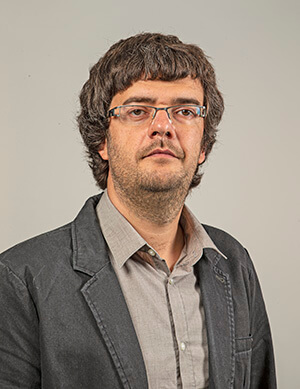 |
| Sašo Blažič |
- Strejc method (based on a step response),
- Åström method with a relay in a closed-loop,
- model adaptation method.
- To present the area of system identification, especially in relation to dynamical systems.
- To expose the problem of biased identification results in case of ignoring external conditions and/or inappropriate choice of parameters.
- To present the least squares method and show its applicability in different areas.
- To show the applicability of parameter estimation methods for dynamical systems.
- To present the methods of non-parametric model identification.
- To expose the problems of identification of unstable systems and the problems of identifiability in a closed loop.
- To introduce the practical problems of identification.
- lectures
- laboratory work
Module E
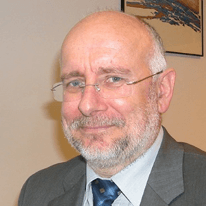 |
 |
| Rafael Mihalič | Valentin Ažbe |
- lectures
- laboratory work
- project assignment
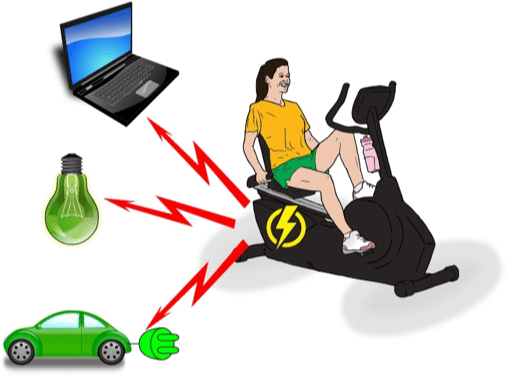
 |
 |
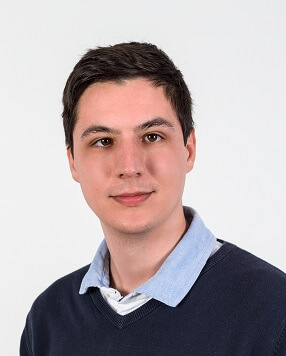 |
| Marko Čepin | Miloš Pantoš | Aljaž Špelko |
- lectures
- laboratory work
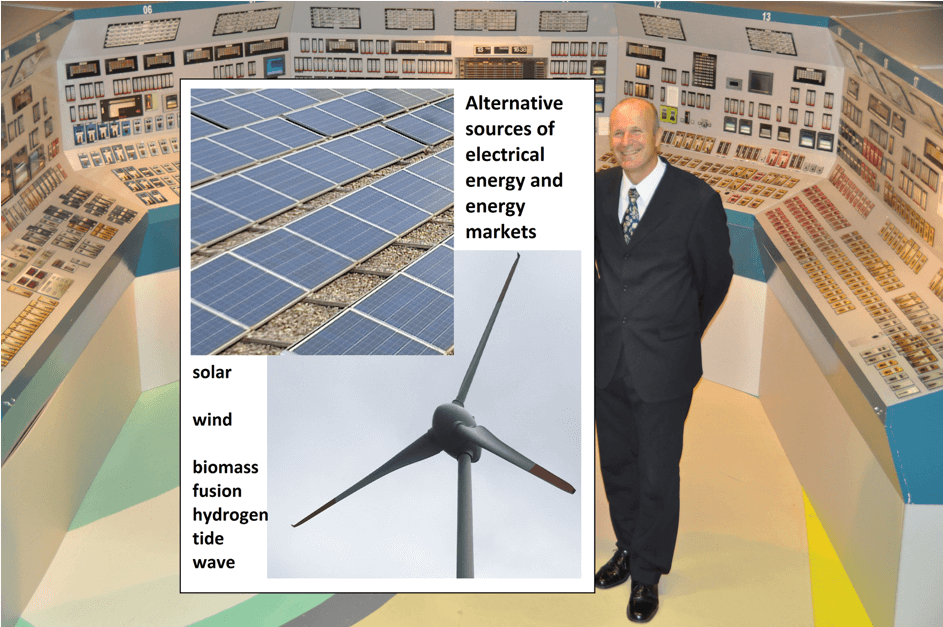
Module L
Higher education teachers:
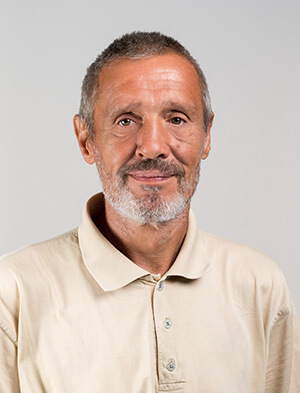 |
| Sašo Tomažič |
Credits: 6
Semester: Summer
Subject code: 64299E
Duration: one semester (15 weeks)
Time commitment (lectures/tutorial and lab work/individual work): 45/30/75
Content (Syllabus outline)
Aspects of security (authentication, privacy, confidentiality, non-repudiation, accessibility). Protection of communication and information systems (security policy, threats, authentication, authorization, firewalls, anti-virus protection). Stream chippers. Symmetric key encryption (DES, IDEA, AES). Asymmetric key encryption (exponential key exchange, RSA, elliptic curves). Hash functions (MD5, SH1). Digital signature. Key management (certificates, authentication, public key infrastructure). Cryptanalysis.
Objectives and competences
To understand the basic principles of data protection during their transfer and storage. To understand security in data access. To understand the threats and different ways to secure information and communication systems.
Learning and teaching methods
- lectures
- laboratory work
Study materials
1. A. J. Menezes, P. C. Oorschot, Scott A. Vanstone: Handbook of Applied Cryptography, CRC Press, 1997.
2. G. J. Simmons (editor): Contemporary Criptology, The Science of Information Integrity, IEEE Press, 1991.
3. M. Jagodič, S. Tomažič (urednika): Varnost in zaščita v telekomunikacijskih omrežjih. Elektrotehniška zveza Slovenije, Ljubljana, 1997.
Higher education teachers:
 |
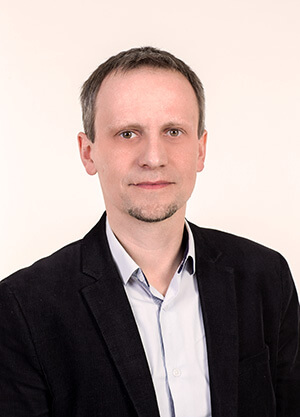 |
| Andrej Košir | Janez Zaletelj |
Credits: 6
Semester: Summer
Subject code: 64243E
Duration: one semester (15 weeks)
Time commitment (lectures/tutorial and lab work/individual work): 45/30/75
Assessment: written and oral exam (40 %), guided project report (60 %)
Content (Syllabus outline)
The course covers theory and applications of optimisation methods relevant to the area of the study. The focusing is also on practical skills in the process of real optimisation problem solving (using computer tools). The teaching is based on Python Jupyter notebooks. In the intro part we will cover Algorithms and computational complexity (algorithms, computational and memory complexity estimation) and Graph theory (representation, operations on graphs, selected graph properties, basic graph algorithms) and data structures. Next topics covered are the following: The Optimization task (formulation, objective function, set of solutions), Linear, integer programming and mixed programming, (simplex method, selected known problems). Network analysis (maximal flow, minimal cost, shortest path, optimal labelling). Nonlinear optimization (gradient and Newton method, Branch and bound, constraint optimization). Markov chains with basic probability theory (classification of states, ergodicity). Time series and Queuing theory. Heuristic optimization techniques. Optimisation involving end users (humans) including experimental design and evaluation. As it is gaining a crucial role in communication today, we give a special attention to optimization with real end users including experimental design, development of user experience metrics and implementation of real user experiments.
Objectives and competences
The course aims to acquaint students with basic theoretical aspects in order to be able to recognize optimisation problems in real engineering practice. Furthermore, students will experience how real problem formulation and solution is progressively developed in several steps. Engineering optimisation is not just learned but also experienced.
Learning and teaching methods
- lectures
- tutorials
Study materials
1. Course Python Jupyter Notebooks with hands-ons.
2. Selected research papers.
3. M. W. Carter, C. C. Price: Operations Research, A Practical Introduction, CRC Press, 2000.
4. M. X. Cheng, Y. Li, D.-Z. Du: Combinatorial Optimization in Communication networks, Springer, 2006.
5. R. Johnsonbaugh, M. Schaeffer: Algorithms, Prentice Hall, 2004.

Winter semester
October - February
 |
 |
| Janez Bešter | Urban Sedlar |
Credits: 6
Semester: Winter
Subject code: 64301S
Duration: one semester (15 weeks)
Time commitment (lectures/tutorial and lab work/individual work): 45/30/75
Assessment: written project report (50 %), oral presentation (50 %)
Content (Syllabus outline)
This course focuses on Internet-based services and applications in multiple domains: from telco-provided and managed services to over-the-top services and applications. You will learn the basic principles of design, development and operation of internet services and applications, from the architectural in technological aspects to the development ecosystems and business aspects. Special focus will be given to cybersecurity, which is of crucial importance in all modern connected systems.
The content is divided into the following sections: Evolution of the information and communication technologies. Overview of modern service domains: communications, information, entertainment, internet of things. Architectures and technologies for providing voice and multimedia services, World Wide Web, peer-to-peer systems and internet of things. Cloud computing. Business aspects. User aspects: terminal equipment, accessibility, user experience. Cybersecurity on the network, application and user levels.
Objectives and competences
After successful completion of the course, students will be able to: describe the architectures and operation of systems for providing modern voice, video and data services; explain different cloud computing models and their characteristics; explain the common security threats and preventive measures in internet services; describe different scenarios of the Internet of Things, the building blocks and techniques needed for their implementation; design voice, video and data services, taking into account all the necessary building blocks; create a web-based service using multiple modern development principles.
Learning and teaching methods
- lectures
- tutorials
Study materials
1. Plevyak, T., Sahin, V.: Next Generation Telecommunications Networks, Services, and Management. Wiley-IEEE Press, 2010.
2. Mitra, S., Bhatnagar, G.: Introduction to Multimedia Systems. Academic Press, 2001.
3. Rashvand, H. F., Alcaraz Calero, J. M.: Distributed Sensor Systems: Practice and Applications, 2012.
4. Toby Velte: Cloud Computing, A Practical Approach. McGraw-Hill Education, 2009.
5. Bruce Schneier: Secrets and Lies: Digital Security in a Networked World. Wiley, 15th edition, 2015.
6. Bruce Schneier: Data and Goliath: The Hidden Battles to Collect Your Data and Control Your World. W. W. Norton & Company, 1st edition, 2015.
7. Tim Wu: The Master Switch: The Rise and Fall of Information Empires. Vintage, 2011.
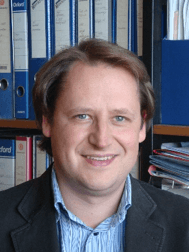 |
 |
| Janez Krč | Marko Topič |
Credits: 6
Semester: Winter
Subject code: 64264S
Duration: one semester (15 weeks)
Time commitment (lectures/tutorial and lab work/individual work): 45/30/75
Assessment: laboratory work project (40 %), oral exam (60 %)
Content (Syllabus outline)
The course will provide students with the knowledge and skills from selected fields of photonics. After a broader overview of trends and challenges in photonics we will focus on two areas: (a) integrated photonics and (b) photovoltaics.
Integrated photonics:
Why integrated photonics? Why exchange an electron in integrated circuits with a photon? Components of integrated photonics: waveguides, input and output couplers, splitters, combiners, (de-)multiplexers, optical filters, resonators, photonic crystals, detectors, lasers and others. Examples of photonic integrated circuits (telecommunication, sensing).
Photovoltaics:
Solar cells as photonic devices – where does the light go? Global trends and challenges in photovoltaics – established renewable energy technology? Solar cell technologies and optical concepts. Optical modelling of solar cells as a tool for optimization. Nano and micro photonic structures in solar cells – why? How can I design a solar power plant.
Objectives and competences
- To acquire the knowledge and operational principles of contemporary nanophotonic structures,
- knowledge on state-of-the-art architectures, functionalities, and technologies of photonic integrated circuits,
- basic knowledge on the practical design of photonic integrated circuits,
- to know the structures and operational principles of fiber sensors,
- knowledge on and understanding of photonic structures for light management in solar cells,
- practical approaches of design and characterisation of photonic devices.
Learning and teaching methods
- lectures
- laboratory work
Study materials
1. L. Chrostowski, M. Hochberg: Silicon Photonics Design. Cambridge Uni. Press, 2015.
2. G. T. Reed, A. P. Knights: Silicon Photonics. John Wiley, 2016.
3. A. Luque. S. Hegedus, Handbook of photovoltaic science and eng. Wiley, 2011.
4. J. Krc and M. Topic, Optical modeling and simulation of thin-film photovoltaic devices. CRC press, 2016.
Higher education teachers:
 |
 |
| Rafael Mihalič | Urban Rudež |
Credits: 6
Semester: Winter
Subject code: 64283
Duration: one semester (15 weeks)
Time commitment (lectures/tutorial and lab work/individual work): 45/30/75
Assessment: written exam, oral exam
Content (Syllabus outline)
Basic facts and ground reasons behind electric power system (EPS) dynamic phenomena occurrence, categorization of different dynamic phenomena, basic principles for analysis of each phenomenon type, EPS elements modelling principles for different time-scale dynamic phenomena, small-signal stability EPS analysis (linear state-space modelling, eigenvalues, system controllability and observability, etc.), methods for discrete-time systems analysis, approaches to non-linear systems dynamic phenomena analysis, analysis of typical and most common types of EPS dynamic phenomena (oscillations, transient stability, frequency stability, traveling waves, asynchronous operation of a synchronous machine, transient phenomena within a synchronous machine, short-circuit events in EPS, impact torque on synchronous generators as a consequence of different EPS events, capacitive-current switching, sub-synchronous resonance), measures for the stabilization of EPS operation, basic principles of dynamic phenomena digital simulation techniques, equivalent circuits of different EPS elements, numerical instability issues and measures for its avoidance, setting-up EPS model initial conditions, setting-up initial conditions for a composite model synchronous generator – governor – exciter, basic characteristics of dynamic simulation software tools, momentary mode dynamic simulations, stability mode dynamic simulations, real-time dynamic simulations.
Objectives and competences
EPS dynamic phenomena overview and categorization with regards to their characteristics, guidance, and approaches to analysis and solving each EPS dynamic phenomena, application of mathematical differential equation solving-knowledge for analysis of EPS dynamic phenomena, understanding the background of EPS dynamic simulation software operation.
Learning and teaching methods
- lectures
- laboratory work
Study materials
1. Mihalič, Rafael: Stabilnost in dinamični pojavi v elektroenergetskih sistemih: osnovni pojmi s primeri. Ljubljana: Slovensko združenje elektroenergetikov CIGRÉ - CIRED, 2013. 261 str., ilustr. ISBN 978-961-6265-23-2. [COBISS.SI-ID 266825984]
2. Kundur P.: Power System Stability and Control. McGraw Hill, 1994.
3. Machowski J. Bialek J. W., Bumby J. R.: Power System Dynamics and Stability. John Wiley & Sons, 1997.

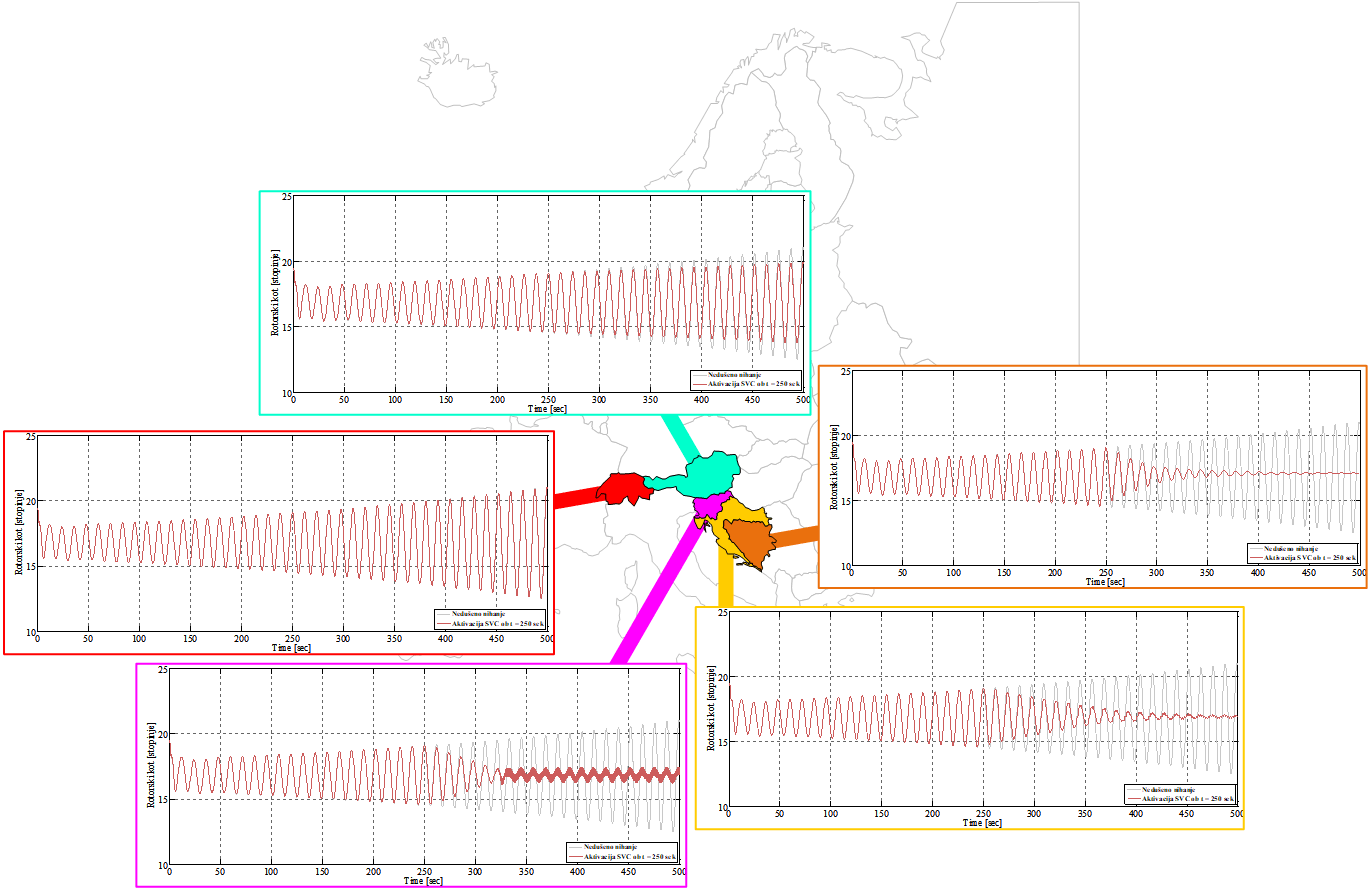
Higher education teachers:
 |
 |
| Rafael Mihalič | Urban Rudež |
Credits: 6
Semester: Winter
Subject code: 64309
Duration: one semester (15 weeks)
Time commitment (lectures/tutorial and lab work/individual work): 45/30/75
Assessment: written exam, oral exam
Content (Syllabus outline)
Development concepts of modern electrical power systems (EPS), transmission congestion issues in ENTSO-E interconnection, technical limitations in long-distance electrical energy transmission, comparison between alternating current (AC) and direct current (DC) transmission, increasing EPS transmission capacity by following modern concepts, examples of past EPS events/disturbances with high impact on EPS operation and introduction of possibilities for their avoidance, Flexible AC Transmission System (FACTS) concept, FACTS devices – basic principles, first generation of FACTS devices, second generation of FACTS devices, shunt FACTS devices, series FACTS devices, combined series-shunt FACTS devices, high voltage direct current (HVDC) transmission, impact of FACTS devices on EPS operational parameters, FACTS applicability (dynamic load-flow control, oscillation damping, transient stability enhancement, voltage control, voltage collapse prevention), modelling of FACTS devices for load-flow studies, modelling of FACTS devices for direct stability assessment methods, modelling of FACTS devices for dynamic EPS phenomena studies.
Why HVDC, why market for HVDC has overtaken that for AC, what are the differences?
Objectives and competences
- Being familiar with and understanding the limitations of electrical energy transmission,
- knowing basic conceptual differences between direct current (DC) and alternating current (AC) transmission: pros and cons, specifics of both concepts,
- being acquainted with load-flow control possibilities in electric power systems and
- Flexible AC transmission system concept.
Learning and teaching methods
- lectures
- laboratory work
Study materials
1. Flexible ac transmission systems (FACTS) / edited by Yong Hua Song and Allan T. Johns. – London: IEE, cop. 1999 – (IEE power and energy series; Vol. 30).
2. E. Acha, C. R. Fuerte-Esquivel, H. Amirez-Perez, C. Angeles-Camacho: FACTS – Modelling and Simulation in Power Networks. John Wiley & Sons, Chichester 2004.
3. Kalyan K. Sen, Mey Ling Sen: Introduction to Facts controllers. IEEE Press, 2009.
4. Naran G. Hingorani, Laszlo Gyugyi: Understanding FACTS. IEEE Press, New York 1999.
elective winter courses
Students must choose one(1) course
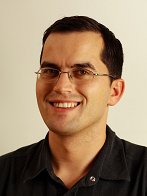 |
| Marko Jankovec |
- Introduction into design of new products, innovation process, product development cycle, technology market development phases, new product design approaches, cost analyses. Electrical, mechanical, thermal and product design requirements. Amortization period and safe disposal the device. Economic aspects of the construction and operation of electronic devices.
- Basics of reliability theory of electronic systems, probability distribution functions, environmental influences, Arhhenious plot, part stress analysis prediction, reliability databases. Redundancy basics, fault tolerant design.
- Standardization system. Organizations for standardization. European harmonized standards. The CE marking. Worldwide product quality and safety regulators. Legal restrictions of electronic products. Safety and electromagnetic compatibility (EMC) regulations.
- EMC basics, noise coupling paths, near and far electromagnetic field, common and differential mode interference and suppression, EU EMC directives and standards, measurements of the EMC.
- Printed circuit board technologies. Manufacturing steps, Rigid and flexible PCB materials, standard components. PCB design techniques for EMC. Power sources, power distribution and decoupling. PCB layout strategies. Component placing and routing. Ground planes. Multilayer PCBs. Elimination and prevention of power to signal interference.
- Signal integrity. Transmission lines and line impedance matching. Power and signal filtering. Surge protection of power supplies and protection devices. Electrostatic discharge protection techniques and devices.
- Electrical connections shielding and grounding. Shielding against near and far field electromagnetic interference. Heating and cooling of devices and systems. Thermal measurement and protection. Housings of devices and elements. Maintenance of electronic devices.
- lectures
- laboratory work
- project assignment
 |
 |
| Grega Bizjak | Matej Bernard Kobav |
- Basics of distribution and industrial networks: basic configurations, voltage levels, distributions and transformation stations, rural and metropolitan area networks, practice in Europe.
- Electrical equipment in distribution and industrial networks: transformers, transformer connections and earthing, overhead and cable networks, industrial networks, switching devices, switchgear, compensation devices, loads and their characteristics, selection of proper equipment.
- Operation of distribution and industrial networks: local standards, voltage drop, voltage regulation, faults in distribution and industrial networks, influence of network parameters and earthing on fault currents, protection devices, lightning protection, and specificities of industrial networks.
- Safety for users: basic operating and grounding modes of distribution and industrial networks from a safety perspective, earthing of transformers, generators and loads, safety risks for users, touch and step voltage, protection measures.
- Distributed generation: integration of distributed and industrial generation units into distribution and industrial networks, influence of distributed generation on network behaviour, island operation with distributed and industrial generation units, stability and reliability of networks in island operation, using load shading, problems connected with networks in island operation mode.
- lectures
- laboratory work
 |
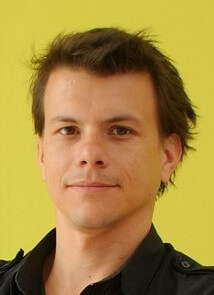 |
| Igor Papič | Boštjan Blažič |
- lectures
- tutorials
- laboratory work
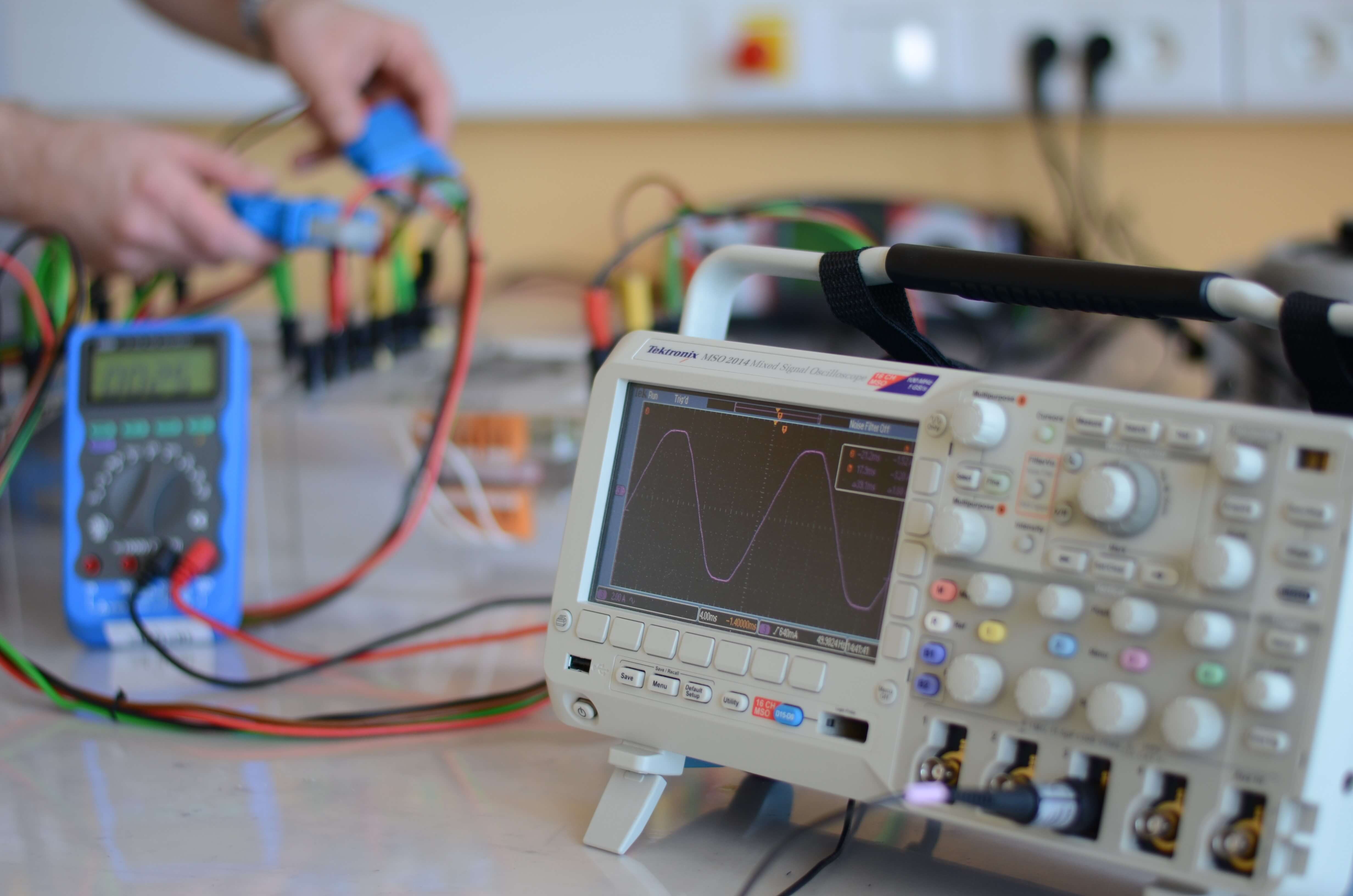
Summer semester
February - June
Credits: 30 Semester: Summer Subject code: 64313
Completed all other obligations under the study program (90 ECTS).
In the master's thesis, the student independently deals with an expert issue, showing his/her creative ability for research and development work and above all his/her ability to successfully and comprehensively apply the knowledge gained. Several students can work together to produce a single master's thesis; in such a case, each student’s contribution must be made clear.
The master's thesis prepared by the student under the mentorship of a selected mentor from the Faculty of Electrical Engineering of the UL is proof that the student is capable of independently resolving problems in the field of electrical engineering and beyond.
Knowledge and understanding: The ability to define research-development problem in the field of electrical engineering for the client (from the economy and other spheres) and analysis of the different possible ways to address it.
Application: Students will be able to effectively use knowledge and skills acquired during their studies and complex research and development problems in the field of electrical engineering and beyond.
Reflection: In the thesis the students must demonstrate the ability to find new solutions and their critical judgment. In doing so, they are able to select and effectively use appropriate literature or other sources, and demonstrates the capacity for research and development work.
Transferable skills: The ability to manage complex research and development projects as well as written and oral communication at a high professional level.
Competences
Learning outcomes
Specialization
Understand and use advanced concepts of power system monitoring, operation, control and protection. Master how to evaluate and solve complex technical problems related to power engineering technology by applying mathematical and scientific principles.
Technology
Advanced power systems extend beyond information technologies and electronics. They will be and already are a large part of energy systems. You will learn how to efficiently take advantage of information and communication technologies and electronics in the field of electrical power engineering.
Business
Understand the business and regulatory landscape that national and multinational power and utility companies must work within. Apply problem solving techniques to work challenges and make decisions using established engineering principles, methodologies and tools.
Responsibility
Achieve desired results whilst being mindful of their wider impact. As engineers you will bear a high level of responsibility. Balance professional, social and environmental responsibility, cilent demands and their social and environmental consequences.
Teamwork
An electrical power system is a sum of different parts and processes. It takes a group of skilled individuals for it to perform at the highest level. By connecting with experts from various fields you will develop your skills of working in a team.
Communication
Attain active written and oral communication both at a high professional level as well as at a non-technical level, depending on the target audience.
24
Available enrolment places
120
ECTS acquired
8.000€
4.000€
Tuition fee per study year (Reduced for 2024/25)
